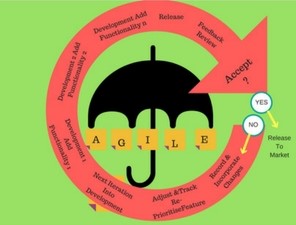How Agile Methodology Enables Offshore Software Development

Let us discuss a user case here. There is a renowned mortgage company which, having suffered the economic downturn and withstood its onslaught, now has a fresh set of problems on its hands. Its problems relate to legacy systems which are leading to decreasing customer satisfaction, increased competition from both small and large players and a transient marketplace that they are unable to predict.
In this scenario, the company decides to focus on its core business, i.e. offering tailor-made solutions to its mortgage customers, adhering to statutory and regulatory requirements and looking at developing its business by offering a bouquet of services.
To ensure that end customers can obtain information, transact and analyze data is critical to its business success. Putting together a software development team will mean additional resources, costs and increased lead time.
The client contracts an offshore software development company to move its legacy applications to a next-gen platform. The migration should also include new features, directories, and resource repositories while empowering end customers to transact online. The offshore development company has been servicing the mortgage sector for over a decade and hence understands this business better than most others. Its team of engineers is particularly experienced in the technologies required to migrate and enhance existing systems. The project is initiated.
The story does not end here. The customer releases the platform after phase One and realizes that there are lots of things to be added, integrated, and some features to be removed. Agile methodology ensures that weekly meetings provide an opportunity for on-the-go improvements and sometimes even dynamic changes to requirements are implemented.
The project is not delivered at the end, as an unpleasant surprise! It evolves over time and it is this capacity for evolution that ensures that the final product exceeds client expectations.
Features which the mortgage company believed were of absolute importance at the start of the project have been replaced by features which were not even on the list of requirements at project initiation. Agile testing ensures that the team tests the project, not from the point of view of software evolution, but from the point of view of end user satisfaction. The testing team tests the project, in the same way as an end user and their feedback provides valuable input to the client. This ability to change a project on-the-go, to match the requirements document to end user satisfaction and have smaller releases till the final product release are all made possible by Agile methodology.








